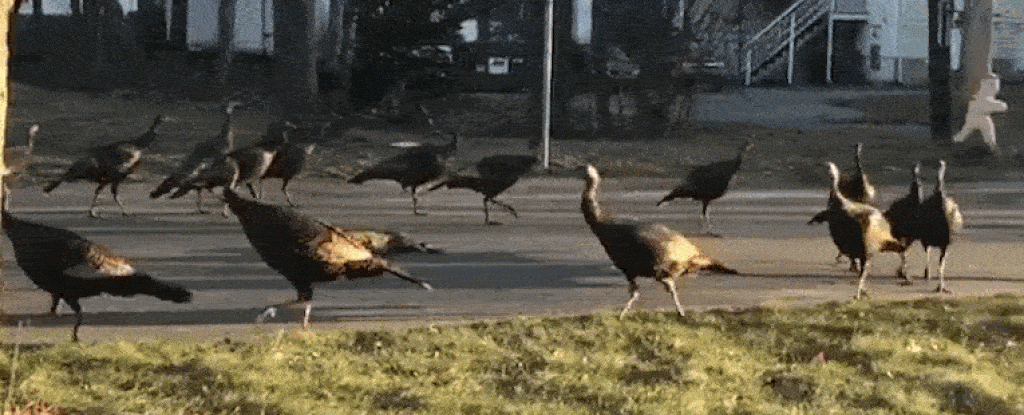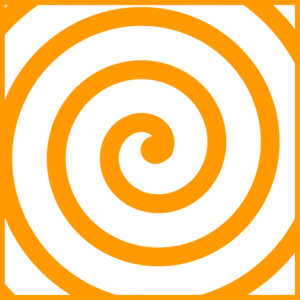Reason, n., an imaginary process onto which the responsibility for thinking is off-loaded.
— René Daumal, A Night of Serious Drinking.
1.0—My two cents—though it’s worth recognizing that in Canada the penny has long been abolished, meaning that what follows is destined to be rounded down to an eventual sum of nothing. The outcome, then, is decidedly less important than the process of rounding.
1.1—The age of intelligible solutions is over … again. It’s as if history is on repeat, only this time it’s not the late-twentieth century postmodernists proclaiming the death of truth out of radical undecidability, but the political flag-waving of an emergent class of proliferating false-sayers. Except that’s not quite right, since post-truth is also post-falsity and the most radical implications of undecidability are phenomenological not epistemological. That doesn’t really make sense, but the situation doesn’t either, so in some ways it’s deeply unclear whether sense is good anymore as a tool for trying to understand the actual dynamics of the political world that is currently in play.
1.2—Foucault taught us that there is no better strategy for population management than uncertainty. Whether oversight is governmental or corporate probably makes little difference. A population whose facts are up for grabs—even if they see and resent those who disseminate the alternative, and even if misinformation and “alternate facts” make no attempt to actually argue their points—doubts their facts. This emergence of doubt problematizes mobilization since uncertainty ultimately interferes with organizational capacity. The point of (politically-disseminated) uncertainty, seen in this way, is not to challenge truth, but to undermine solidarity. In other words, uncertainty is not only an ontological category; it is a social category.
1.3—Only this isn’t really quite right. Let me try again.
2.0—The fact of the matter is that facts don’t really matter like they used to. It’s not to suggest that facts don’t materialize in certain ways, nor that certainty doesn’t certainly weigh-in regarding which facts tend more or less towards mattering. However, at the same time, certainty has nothing but irreverence for the facts, as it must, given that certainty is the lived materialization of fact seen after-the-fact. My point is not to confuse the issue, but to refuse to simply draw a line at the self-evidence of facticity, and to have that be a line drawn well. The point is reinforced by the (arguable) fact that facts, in fact, don’t matter even to themselves, being as they are—or as they declare themselves to be—beyond the matter of interpretation. If a fact is actually a fact, then it precisely does not matter since it informs the context of matter before mattering even gets there. Facts don’t matter because they are ostensibly beyond mattering. Facts care nothing about matter.
2.1—Baudrillard taught us that it’s ineffective to try to fight falsity with truth. This is because truth is—ultimately—a concept whose implementation will always remain accountable to the facts upon which it is proclaimed. Falsity is different, since it’s immanently unaccountable to truth, even as it masquerades as a viable alternative. Falsity is not un-true; it is simply indifferent to the facts. Or, to put it differently, truth cares about falsity more than falsity cares about truth. Think about it as a relationship metaphor—it will probably not end well for truth, the needier partner.
3.0—A recent meme showed a group of turkeys dancing in strange ways around a dead cat. The turkeys formed a circle around the cat, walking slowly in a seemingly ritualistic loop—an ironic reversal of the usual scenario in which a dead turkey is surrounded by a family of hungry diners. But circles on repeat are spirals and spirals as diagrams are representations of process rather than outcome. It’s thinking around a situation that cannot quite be determined by evidence alone.
3.1—A cautionary tale: the scientists insisted that the turkeys were circling because they didn’t know what else to do. Circling, then, might be seen as a form of engaging with uncertainty, or, perhaps better, of manifesting a stance regarding uncertainty. The circling dance of the turkeys holds at bay the facticity of the situation, retaining undecidability while incanting a collective response.

4.0—In René Daumal’s tale of the phoenix, the mystical bird does not rise from the ashes, but crashes backwards through time into a burst of flame. The seeming miracle of the phoenix rising is due simply to a misunderstood point of perspective: the fact is that this bird—for whatever reason—actually travels backwards through time instead of forwards. The reality of the phoenix, then, is to move through life in reverse and to unbind itself from the stream of time such that it lives backwards.
4.1—The explanation doesn’t entirely resolve the story of course, since after crashing into a burst of flame—seen from our timeline—the phoenix still rises. Unless, that is, the crash point is reversible such that at the moment of crash, the phoenix’s timeline also inverts. Time degree zero. The phoenix circles the crash, caught in the gravitational orbit of the moment where it periodically bursts into flames.
5.0—Vilem Flusser argued that photographs are post-historical because photographs undermine the fluidity of the timeline that we call history. They claim to represent time, but in fact they betray temporality by pretending to represent it. Alternate time, or the image seen as the crash of history.
5.1—Recent theories of memory suggest that remembrance is not really a passive recall of stored data, but that every time we remember something we also rewrite it, even if only slightly. It’s a computational metaphor in so far as opening a file often involves making subtle changes and then resaving. The new file overwrites the previous one. They are perhaps not that different, but what differences emerge reveal the mistake at the core of the very concept of an interactive archive. Memory is not interactive: to remember is to betray the integrity of the memory itself. Or to change its direction.
6.0—Alternating current (AC) is a form of electricity in which the current in a circuit periodically reverses direction. Unlike DC electricity, the voltage of an AC circuit current can be easily increased or decreased by using a transformer, allowing an efficient high voltage transmission of power that is then stepped-down to lower, safer (consumer-grade) voltages for everyday use. In other words, AC electricity is made to be flexible, interactive, subject to transformations of intensity, and customized to a variety of applications.
6.1—There is a metaphor here that I have yet to develop fully. For the moment, suffice it to say that AC current may have analogical potential for the questions of truth, falsity, and uncertainty. The idea would be to create an AC form of thought that might be stepped-up or –down, reversed or transformed, into a power source for intellectual speculation. Alternating veracity is truth that is designed to be interactively transformed and customized in ways that embrace the needs of a user or community.
7.0—Last week the scientific community announced the discovery of time crystals: periodic repetitions in the fabric of time, once thought to be impossible figments of a technical imagination. The discovery is significant because it demonstrates the existence of a new state of matter: a “non-equilibrium phase” in which matter at its lowest energy state (zero-point energy) moves without any expenditure of energy. Temporal asymmetry—or movement without effort. In the same way as the atoms of a crystal repeat in physical space, the configurations of a time crystal repeat in time, suggesting a sort of (temporally) alternating materiality as a ground state of matter.
7.1—Time crystals break the principle of time-translation symmetry: the idea that the laws of physics will yield the same results at any given moment in time. Time crystals exhibit temporal variation without energy expenditure, becoming an exception to the rule of equilibrium and in so doing rewriting the rules in ways that demand a sensitivity to “non-equilibrium” states of matter (and perhaps, by extension, of mind as well).
8.0—We’re all saying similar things, circling the facts of the matter as if they mattered all the while knowing that we care much more about them than they do about us.
8.1—When Rebekah Sheldon proposes “xeno” as a methodology of thought, I take it not as a comment on the strangeness of thinking as it normally unfolds, but as a challenge to the mystical edge that thought summons every time it makes an utterance. Xeno is the phoenix crashing—it is a moment of temporal reversibility—a statement that comes from somewhere, but that implodes only to become what we already knew it to be. “Meme-magicians of the white right”? Sure. But also the reverse—politics taken aesthetically: only this time conceived as a tool of resistance. Xeno as counter-magic.
8.2—When David Cecchetto suggests the idea of shaving his teeth as a metaphor for the conflation of logic and affect, all I can think of is how it’s so much more than a metaphor. It’s like nails on a chalkboard, or Styrofoam being broken in half. It’s visceral, material, matter-of-fact, even thought there is no fact to the matter. These are things that should not unnerve me, but they do. Without rational cause, but with actual effect. This is an alternate veracity—the effects are real even if the cause is not.
8.3—When Marc Couroux argues that the current political climate is marked by an attempt to garner the greatest amount of attention with the least amount of effort, he is not—in my estimation—making a political observation, but an artistic one. If individuals have become “relays” then the real question is about which forms of information—real or not—are taking hold. We are far beyond an economy of attention; we are in a situation where facts are literally drawn with (our) attention.
9.0—I am circling a cat that may or may not be dead, having crashed backwards in time into the ball of flames that is illuminating the present moment and may periodically return to illuminate future present moments in similar ways. Sensical strategy will be of little use on its own when it comes to navigating this terrain. We could draw it as a spiral, imagining a circle that builds outwards—an imagination crystal whose purpose is to leverage the occulting potential of occluded ways of thinking. Communities bound by the attempt to imagine together are not bound either to fact or to alternate fact. They are tied instead to the engagement that gives momentum to a collective process of circling.

